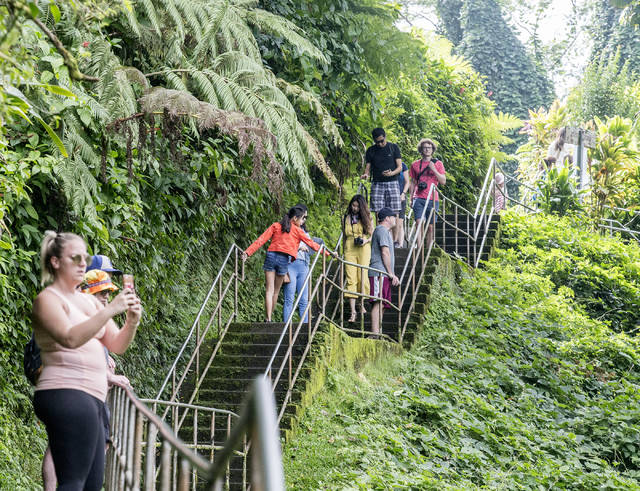Tourism to the Big Island was down from last year for the sixth month in a row in November, according to preliminary data from the Hawaii Tourism Authority.
The number of out-of-state arrivals to the Big Island dropped by 10 percent from November 2017 to November of this year, from more than 136,000 to just more than 123,000.
During the same time period, total visitor expenditures on the Big Island dropped by 18 percent, from $189 million to $154 million.
The drop in visitors from last year disproportionately affected the east side of the island. November saw 19 percent fewer visitors to the Hilo side, dropping from the previous year’s 50,000 to 40,000. Meanwhile, Kona had a comparably slight decrease in visitors, falling from 117,000 to 109,000.
With data from 11 out of 12 months, most of the island’s year-to-date numbers remain just barely above last year’s corresponding numbers.
Total expenditures remain up by 1.6 percent (from $2.13 billion to $2.16 billion) and total visitor days are up by 0.6 percent. Total visitor arrivals to date, however, are down by 1.7 percent, from 1,587,000 to 1,559,000.
The year-to-date numbers for the Hilo side in particular are lower as well. Visitors to the Hilo side to date are down 6.7 percent, while total Kona visitors are just barely ahead of last year, with an increase of 0.3 percent.
On the other hand, international visitor rates to both sides of the island sharply dropped from last year. Hilo saw a decline of 36 percent, while Kona fared only nominally better with a decline of 27 percent. The number of single-day stays from international visitors dropped by 50 percent.
Ross Birch, president of the Island of Hawaii Visitors Bureau, said the shortfall in visitors is still a lingering effect of the lower Puna Kilauea eruption, which badly disrupted the flow of tourists to the island during the summer.
“The message of the good weather, the good air and the nonvolcanic activity, I guess, just isn’t getting out there,” Birch said.
However, Birch thinks the lack of volcanic activity also might be a deterrent to prospective visitors. With no liquid lava visible on the island, one of the chief unique attractions on the island is gone indefinitely.
Birch said early visitor numbers for December seem to be “looking brighter” but will assuredly stack up poorly against the particularly strong numbers from December 2017.
“It’s going to take a lot longer to recover the numbers,” he said.
Some relief for the island likely will occur early in the new year, Birch said, with the commencement of Southwest Airlines’ much-anticipated flights from the mainland to the state. While Southwest Airlines has not yet started selling flights to the state, Birch said he expects the airline to make an announcement regarding Hawaii service in January.
“It will be a big help for us,” he said. “Those are new customers, new options, and the potential for interisland flights is enormous.”
Email Michael Brestovansky at mbrestovansky@hawaiitribune-herald.com.






